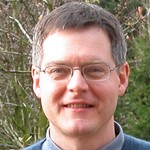
Performance is Dead, Long Live Performance!
In a world of social networking, security attacks, and hot mobile phones, the importance of application performance appears to have diminished. My own research agenda has shifted from looking at the performance of memory allocation to building runtime systems that are more resilient to data corruption and security attacks. In my talk, I will outline a number of areas where code-generation and runtime techniques can be successfully applied to areas for purposes other than performance, such as fault tolerance, reliability, and security. Along the way, I will consider such questions as "Does it really matter if this corruption was caused by a software or hardware error?" and "Is it okay to let a malicious person allocate arbitrary data on my heap?".
Despite these other opportunities, the importance of performance in modern applications remains undiminished, and current hardware trends place an increasing burden on software to provide needed performance boosts. In concluding, I will suggest several important trends that I believe will help define the next 10 years of code generation and optimization research.
Here are the keynote slides in PDF and PPT format.

Ben Zorn is a Principal Researcher at Microsoft Research. After receiving a PhD in Computer Science from UC Berkeley in 1989, he served eight years on the Computer Science faculty at the University of Colorado in Boulder, receiving tenure and being promoted to Associate Professor in 1996. He left the University of Colorado in 1998 to join Microsoft Research, where he currently works. Ben's research interests include programming language design and implementation and performance measurement and analysis. He has served as an Associate Editor of the ACM journals Transactions on Programming Languages and Systems and Transactions on Architecture and Code Optimization and he currently serves as a Member-at-Large of the SIGPLAN Executive Committee. For more information, visit his web page at http://research.microsoft.com/~zorn/.
There Are At Least Two Sides to Every Heterogeneous System
Since there are at least two sides to every heterogeneous system, optimizing for heterogeneous systems is inherently an exercise in managing complexity, balanced trade-offs and layering. Efforts to make the hardware simple may result in software complexity, unless there's an abstracting software layer involved. Different customer-driven usage models make it challenging to offer a layered but consistent programming model, a cost-effective set of performance features and a flexibly-capable systems software stack. And often, the very reasons why heterogeneous systems exist drives them to change over time, making them difficult to target from a code generation perspective.
As a company that provides hardware systems, compilers, systems software infrastructure and services, one of Intel's research and development focuses is on optimizing for heterogeneous systems, such as a mix of IA multicores and Larrabee processors that are used for both graphics and compute co-processing. This talk addresses some of the challenges we've encountered in that space, and offers some potential directions.
Primary among the case studies used in this talk is a dynamic compiler that uses Intel's Ct technology, which strives to make it easier for programmers to specify what data-parallel work needs to be accomplished, and manages extracting parallelism from the application and making use of it on multicore, manycore and compute co-processor architectures. The set of issues that will be addressed include how to specify parallelism, safety and debugging, software infrastructure and compiler architecture, and achieving performance on heterogeneous systems.

Chris (CJ) Newburn serves as a feature architect for Intel's Intel64 platforms, and has contributed to a combination of hardware and software technologies that span heterogeneous compiler optimizations, middleware, JVM/JIT/GC optimization, acceleration hardware, ISA changes, microcode and microarchitecture over the last twelve years. Performance analysis and tuning have figured prominently in the development and production readiness work that he's done. He likes to work on projects that span the hardware-software boundary, that span organizations, and that foster collaboration across organizations. He has submitted nearly twenty patents and has numerous journal and conference publications. He helped start CGO, has served on several program committees, as a journal editor, and as an NSF panelist. He wrote a binary-optimizing, multi-grained parallelizing compiler as part of his Ph.D. at Carnegie Mellon University. Before grad school, in the 80s, he did stints in a couple of start-ups, working on a voice recognizer and a VLIW mini-super computer. He's glad to be working on volume products that his Mom uses.